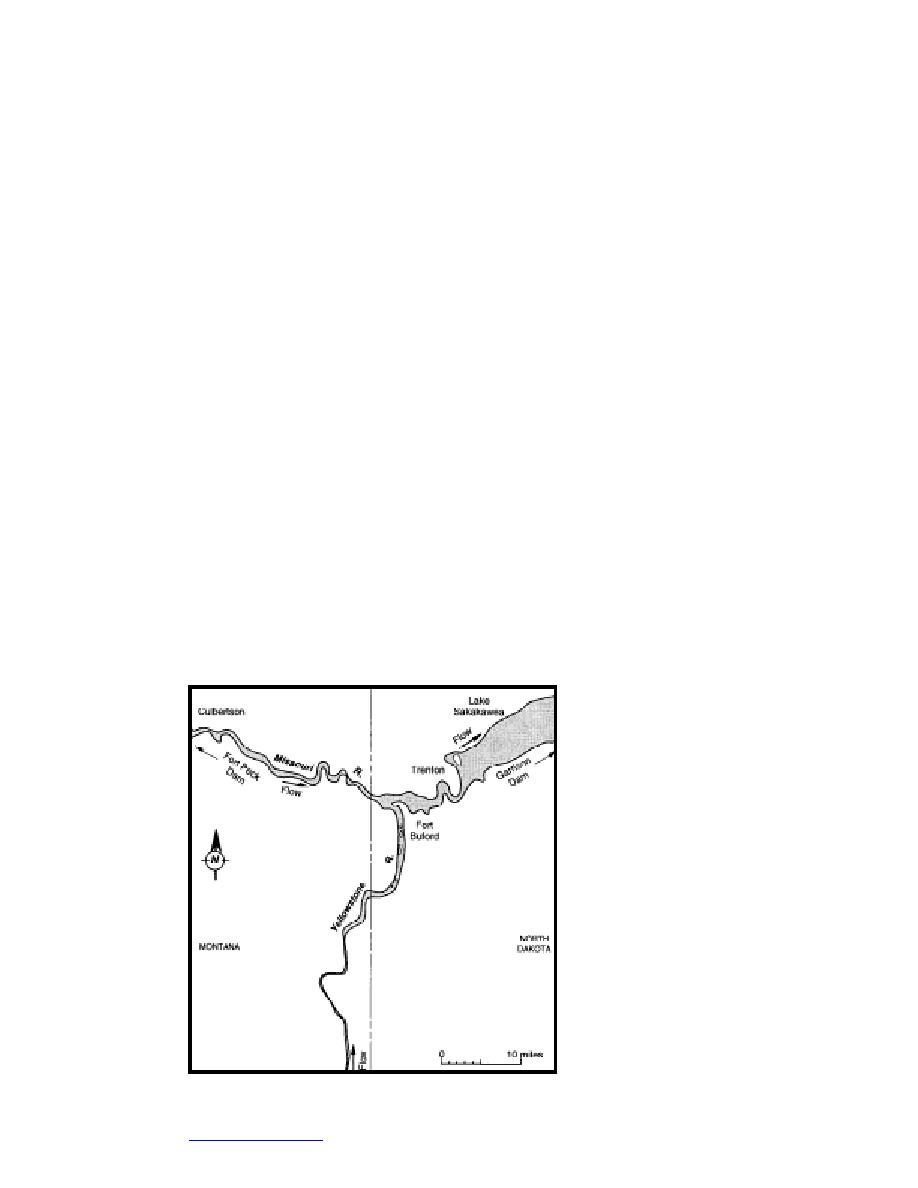
The confluence effect of concentrating ice in a watershed and delivering it to a
downstream jam site is mentioned fairly frequently in accounts of jams (e.g., Michel
1972, Wuebben et al. 1995). Michel outlines a process, typical of many watersheds,
whereby ice cover breakup begins in tributary channels and then progresses down-
stream to main stem channels. He suggests that daytime fluctuations in spring
runoff flows have a greater destabilizing impact on ice covers in tributary chan-
nels than on ice covers in the main stem channel of a watershed. Therefore, in
many watersheds, breakup of tributary ice covers precedes breakup on a main
stem channel. Broken tributary ice accumulates at downstream ice-covered
reaches. Further warming and flow increase lead to collapse of an ice reach and
the occurrence of an ice run. In turn, the mass of ice in a run may be impeded
by the next stable ice reach downstream, and form an ice jam of considerable size.
With still further warming and flow increase, the ice reach and jam collapse, and
another run ensues, possibly resulting in another jam downstream. It may take
several runs for a watershed to release ice. Channel confluences inevitably play a
significant role in the process of ice release from watersheds. It is in a confluence
where rates of ice movement and flow may abruptly increase and where conges-
tion may occur.
Wuebben and Gagnon (1995) describe ice jam formation in the Missouri River
downstream of its confluence with the Yellowstone River in Montana. The two
rivers drain water and ice from the northwest perimeter of the Missouri River
watershed. The confluence alignment of these rivers is shown in Figure 2. Ice from
the Yellowstone River, which has a significantly steeper gradient than does the
Missouri River, typically breaks up first. Ice moves downstream until an intact ice
cover in the Missouri River at the confluence halts its progress. Jams also have
formed along the Missouri River a short distance downstream from the conflu-
ence. They occur when ice and water flow from the Yellowstone River are suffi-
ciently large as to push some distance downstream through the ice cover on the
Missouri River, before eventually jamming. They also may occur when the conflu-
Figure 2. Confluence of
the Yellowstone and Mis-
souri Rivers (Tuthill and
Mamone 1997).
4
Go to contents page



 Previous Page
Previous Page
